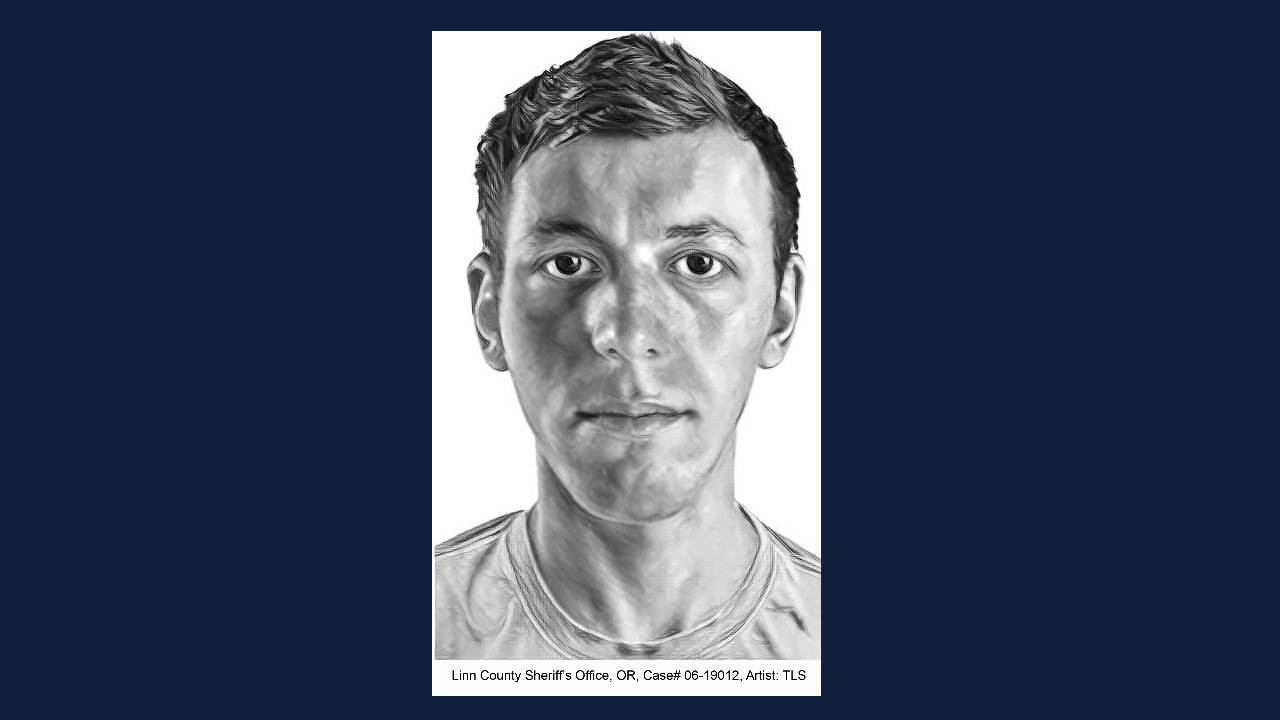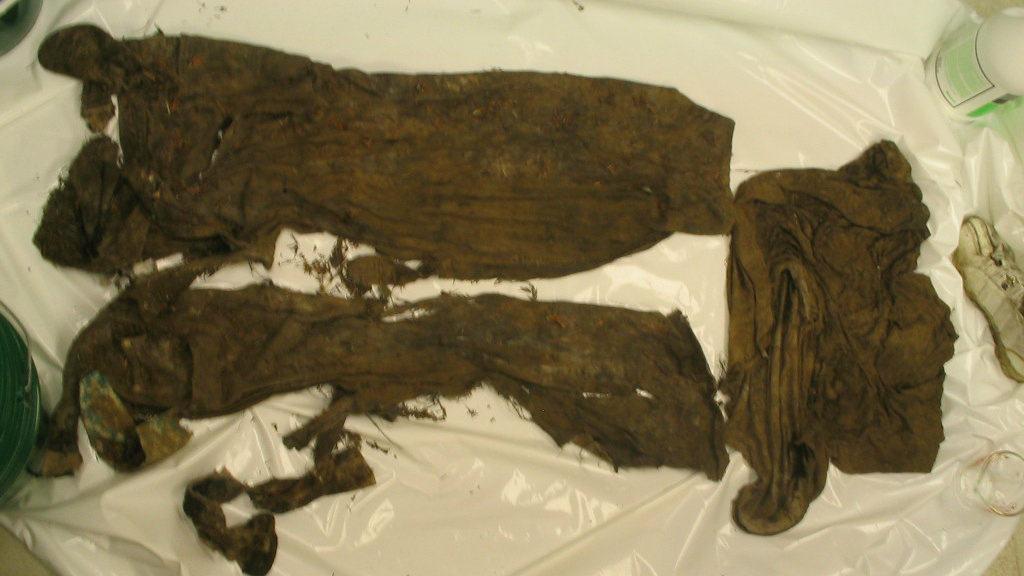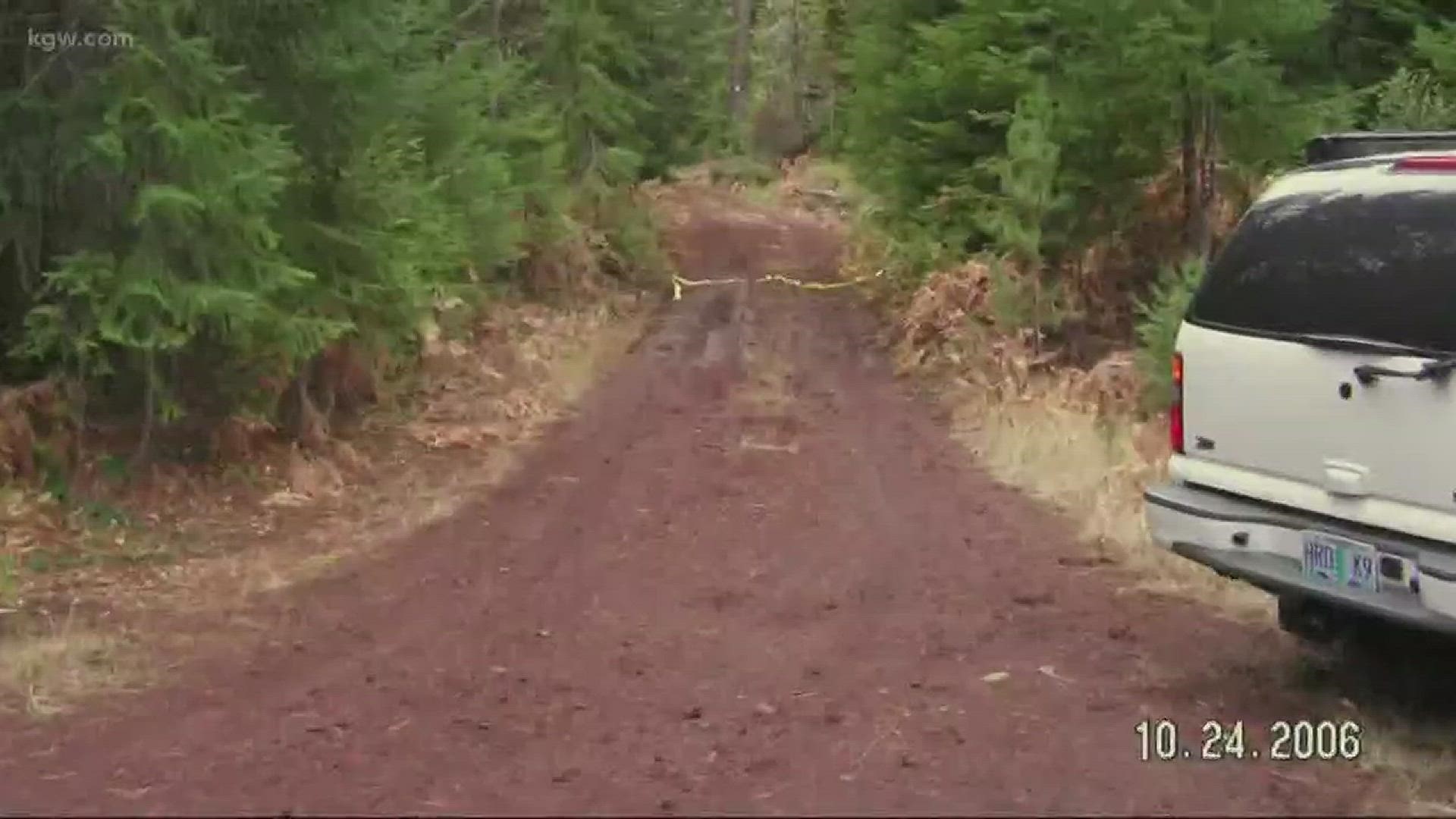PORTLAND, Ore. -- The white tennis shoe stood out among the pine needles of the forest floor. The lone K-Air brand shoe didn’t belong here, deep in the woods. The nearest road was nearly a half-mile away.
After looking around, the hunters who discovered the shoe found other remains, including bones and a human skull. Then, they found a shallow grave.

For nearly a decade, investigators have tried to identify the human remains found near the Big Spring Snow Park.
Detectives used DNA to create a computer generated image of the victim’s face. Forensic analysis helped identify his clothing. And testing of the victim’s hair revealed he lived in Texas or Florida roughly two months before his death.

Still, the man has not been identified.
“Someone has got to be looking for him. Someone is missing him,” said Dr. Nici Vance, forensic anthropologist for the Oregon State Police Medical Examiner Division.
On October 23, 2006, a Linn County sheriff's deputy responded to a report of human remains found near the Big Springs Snow Park, located roughly halfway between Salem and Bend on Highway 22.
Detectives figured the man had been dead for roughly a year, maybe longer. He’d been murdered, said police. But investigators won’t reveal how he was killed.
“Definitely, this was a dump site. Someone dumped him here,” said Detective Captain Paul Timm of the Linn County Sheriff’s office.
Based on the remains, investigators were able to come up with a basic profile. The victim was a white man between 25 and 45 years old. He stood roughly 5-foot-11.
Investigators also found remnants of the man’s clothing, dirty, brown strips of cloth. Closer examination revealed the man wore black Dungarees brand denim pants, along with a second pair of blue nylon athletic pants with black trim.

His T-shirt stood out. It had a unique logo across the front showing a skateboarder, along with the brand name SideOut. The clothing company told detectives the shirt was originally sold at Mervyn’s department stores.

The shoe was K-Air brand, a knock-off of K-Swiss. It was somewhere between a size 10 and size 12 sneaker.
In December 2006, the Linn County Sheriff’s Office released a sketch, hoping someone might identify the man. The rendering, based on measurements of the skull, showed an elongated face and chin, with a long nose.
“This case has a lot of really good physical characteristics, really good genetic information and very good personal effects that we can go on,” said Dr. Vance.
Investigators entered the man’s DNA into federal databases, but came up empty. They also ruled out several people as the possible victim.
Photos: Unidentified remains
Advanced technology would eventually provide a more detailed image of the victim.
Investigators used DNA phenotyping, which can be used to help predict a person’s physical appearance such as skin tone or facial features based on genetic information. The predictive modeling produced vivid computer generated images of the unidentified victim. The lifelike images show a front and side profile.
“This person is poised to be identified,” said Dr. Vance. “We just need to jog someone’s memory. Does it look familiar? Does it look like someone you went to high school with?”
Additionally, investigators analyzed the oxygen isotopes in the victim’s hair. This testing looks at the minerals found in drinking water, then compares it with the minerals found in the water supply in various regions in the country.
Based on the testing, investigators believe the victim moved in the two months prior to his death. Lab results suggest he moved from a cooler climate, back to a warmer climate, and then returned to a cooler climate immediately before his death.
Investigators believe the victim was from Florida or Texas, based on the testing.
“Maybe we were focusing in the wrong area,” explained Det. Captain Paul Timm. “Does somebody recognize him from Texas? Does somebody recognize him from Florida?”
Police sent details of the case to investigators around the country. They also entered it into the National Missing and Unidentified Persons System or NamUs, a searchable database of nearly 15,000 cases that involve unidentified remains.
Oregon has 221 total cases in the system, 151 remain unsolved. View map of Oregon cases
Many of the cases include a description of where the remains were found, along with images of clothing or jewelry found nearby.
This man, found in Linn County on Oct. 23, 2006, is identified as case #06-6601. His NamUs listing includes his computer generated image, along with images of his unique looking shirt with the SideOut logo.
“We’re not just talking about Oregon, we’re talking about a national search for who this could be,” explained Dr. Vance. “Somebody has got to be looking for him.”
Anyone with information about this case is asked to call the Linn County Sheriff's Office.


